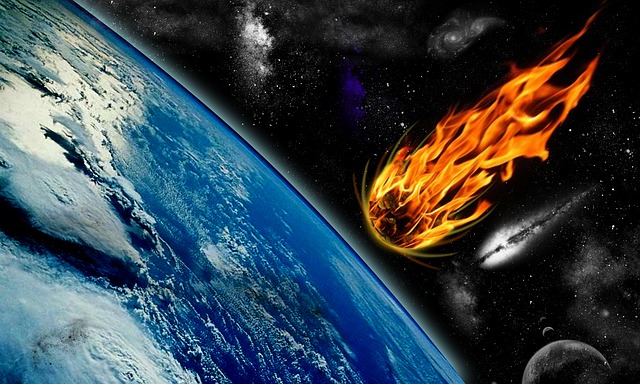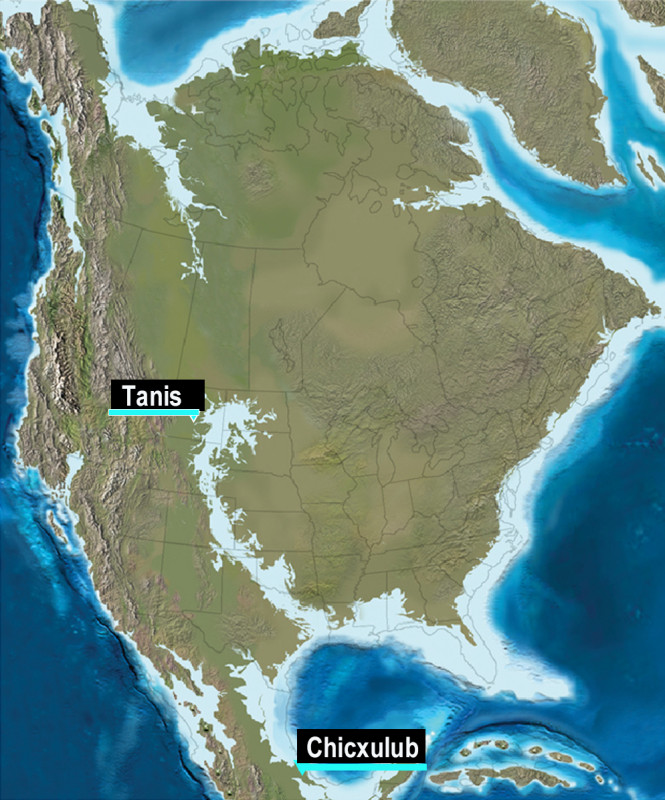 Sixty-six million years ago, nearly 75% of the Earth’s species - both on land and in water, suddenly died out at the same time.
Sixty-six million years ago, nearly 75% of the Earth’s species - both on land and in water, suddenly died out at the same time.
The reason? A mass extinction event that was caused by a 10-15 kilometer-wide asteroid that hit the Yucatan Peninsula in Mexico. The impact of the asteroid sent a wave of natural disasters that affected not only the dinosaurs, but our Earth's climate.
Scientists have been working to find the time the asteroid hit. Though they don’t have the exact year, they now know when it occurred – in the spring! How did scientists find this out? Let’s take a closer look.
A Spring Mystery
Although the asteroid struck Mexico, a huge tidal wave swept the fish up and deposited them thousands of miles away.
 Scientists working at a site called Tanis, in North Dakota, have been studying the fossils of fish that died during that asteroid collision. The gills of the fossilized fish were found to have tiny, spherical beads of molten rock embedded in them which means that fish were literally buried alive!
Scientists working at a site called Tanis, in North Dakota, have been studying the fossils of fish that died during that asteroid collision. The gills of the fossilized fish were found to have tiny, spherical beads of molten rock embedded in them which means that fish were literally buried alive!
Much like the rings in trees, fish bones grow depending on their age and time of year. In the summer, they have peak bone growth; however, in the winter, bone growth declines. An X-ray scan of fish fossils revealed that they were just about to enter a period of enlarged bone growth, indicating springtime.
The bone growth also depends on seasonal food availability. Plankton, the main source of food for the fish, peak during summer. By analyzing the carbon isotopes (variations of the element carbon) in the fossils, scientists inferred that the plankton hadn’t peaked yet. This also confirms that the asteroid impact indeed took place in springtime.
A Game Changer
Spring is generally the time when animals come out of hibernation and start to tend to their young. The asteroid hit the Northern Hemisphere when the animals would have used up their food reserves for the winter and were out in the open, and hence vulnerable.
Studies show that the debris from the impact blocked the sun and may have cooled the atmosphere by as much as 7-8 degrees C. This led to decades of "nuclear winter" and the extinction of many plant and animal species, including dinosaurs that need warm climates to thrive.
As excavation and research continue at the Tanis site in North Dakota and others, more secrets might be revealed about our Earth's past!
Sources: BBC, Scientific American, Science Daily, U.K Natural History Museum







